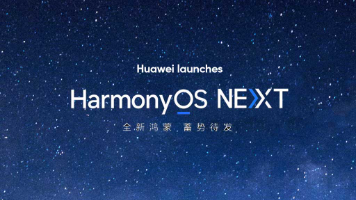HarmonyOS实战开发:@ohos.uri (URI字符串解析)
本模块提供URI字符串解析的相关功能。
本模块提供URI字符串解析的相关功能。
说明:
本模块首批接口从API version 8开始支持。后续版本的新增接口,采用上角标单独标记接口的起始版本。
导入模块
import uri from '@ohos.uri'URI
构造URI对象,提供判断对象相等、规范路径等方法。
属性
系统能力: SystemCapability.Utils.Lang
| 名称 | 类型 | 可读 | 可写 | 说明 |
|---|---|---|---|---|
| scheme | string | 是 | 否 | 获取URI 的协议部分。 |
| userInfo | string | 是 | 否 | 获取 URI 的用户信息部分。 |
| host | string | 是 | 否 | 获取 URI 的主机名部分(不带端口)。 |
| port | string | 是 | 否 | 获取 URI 的端口部分。 |
| path | string | 是 | 否 | 获取 URI 的路径部分。 |
| query | string | 是 | 否 | 获取 URI 的查询部分。 |
| fragment | string | 是 | 否 | 获取 URI 的片段部分 |
| authority | string | 是 | 否 | 获取此URI的解码权限组件部分。 |
| ssp | string | 是 | 否 | 获取URI的解码方案特定部分。 |
命名规则
命名形式:
标准uri定义由以下三个部分组成 [scheme:]scheme-specific-part[#fragment]
- scheme: 协议名,根据需要填写。例如http、https、ftp、datashare、dataability等。
- scheme-specific-part: URI的特定解码方案特定部分,由[//][authority][path][?query]组成,根据需要填写。
- authority: URI的解码权限组件部分。由[userinfo@]host[:port]组成,根据需要填写。
- userinfo: 用户信息,根据需要填写。
- host: 服务器的主机名部分,当authority存在时,此项必填。
- port: 服务器端口,根据需要填写。
- path: 路径信息,根据需要填写。
- query: 查询部分,根据需要填写。
- authority: URI的解码权限组件部分。由[userinfo@]host[:port]组成,根据需要填写。
- fragment: 片段部分,根据需要填写。
URI示例:
const result1 = new uri.URI("ftp://ftp.aaa.bbb.ccc/dddd/eee.txt");
console.log(result1.host) // ftp.aaa.bbb.ccc
console.log(result1.fragment) // null
console.log(result1.path) // /dddd/eee.txt
console.log(result1.scheme) // ftp
console.log(result1.userInfo) // null
console.log(result1.port) // -1
console.log(result1.query) // null
const result2 = new uri.URI("gopher://spinaltap.micro.umn.edu/00/Weather/California/Los%20Angeles#fragment");
console.log(result2.host) // spinaltap.micro.umn.edu
console.log(result2.fragment) // fragment
console.log(result2.path) // /00/Weather/California/Los Angeles
console.log(result2.scheme) // gopher
console.log(result2.userInfo) // null
console.log(result2.port) //-1
console.log(result2.query) // null
const result3 = new uri.URI("datashare:///com.samples.datasharetest.DataShare/DB00/TBL00");
console.log(result3.host) // null
console.log(result3.fragment) // null
console.log(result3.path) // /com.samples.datasharetest.DataShare/DB00/TBL00
console.log(result3.scheme) // datashare
console.log(result3.userInfo) // null
console.log(result3.port) // -1
console.log(result3.query) // null
const result4 = new uri.URI("https://username:password@host:8080/directory/file?foo=1&bar=2#fragment");
console.log(result4.host) // host
console.log(result4.fragment) // fragment
console.log(result4.path) // /directory/file
console.log(result4.scheme) // https
console.log(result4.userInfo) // username:password
console.log(result4.port) // 8080
console.log(result4.query) // foo=1&bar=2
const result5 = new uri.URI("dataability:///com.example.DataAbility");
console.log(result5.host) // null
console.log(result5.fragment) // null
console.log(result5.path) // /com.example.DataAbility:
console.log(result5.scheme) // dataability
console.log(result5.userInfo) // null
console.log(result5.port) // -1
console.log(result5.query) // null
constructor
constructor(uri: string)
constructor是URI的构造函数。
系统能力: SystemCapability.Utils.Lang
参数:
| 参数名 | 类型 | 必填 | 说明 |
|---|---|---|---|
| uri | string | 是 | 入参对象。 |
错误码:
以下错误码的详细介绍请参见语言基础类库错误码。
| 错误码ID | 错误信息 |
|---|---|
| 10200002 | Invalid uri string. |
示例:
let mm = 'https://username:password@host:8080/directory/file?foo=1&bar=2#fragment';
new uri.URI(mm);new uri.URI('https://username:password@host:8080');toString
toString(): string
系统能力: SystemCapability.Utils.Lang
返回适用于URI中的查询字符串。
返回值:
| 类型 | 说明 |
|---|---|
| string | 返回网址的字符串序列化。 |
示例:
const result = new uri.URI('https://username:password@host:8080/directory/file?query=pppppp#qwer=da');
let result1 = result.toString();equals(deprecated)
equals(other: URI): boolean
判断此URI是否与其他URI对象相等。
说明:
从API version 8开始支持,从API version 9开始废弃,建议使用equalsTo9+替代。
系统能力: SystemCapability.Utils.Lang
参数:
| 参数名 | 类型 | 必填 | 说明 |
|---|---|---|---|
| other | URI | 是 | 需要比较的URI对象。 |
返回值:
| 类型 | 说明 |
|---|---|
| boolean | 返回true表示相等,否则返回false。 |
示例:
const uriInstance = new uri.URI('https://username:password@host:8080/directory/file?query=pppppp#qwer=da');
const uriInstance1 = new uri.URI('https://username:password@host:8080/directory/file?query=pppppp#qwer=da');
uriInstance.equals(uriInstance1);equalsTo9+
equalsTo(other: URI): boolean
判断此URI是否与其他URI对象相等。
系统能力: SystemCapability.Utils.Lang
参数:
| 参数名 | 类型 | 必填 | 说明 |
|---|---|---|---|
| other | URI | 是 | 需要比较的URI对象。 |
返回值:
| 类型 | 说明 |
|---|---|
| boolean | 返回true表示相等,否则返回false。 |
示例:
const uriInstance = new uri.URI('https://username:password@host:8080/directory/file?query=pppppp#qwer=da');
const uriInstance1 = new uri.URI('https://username:password@host:8080/directory/file?query=pppppp#qwer=da');
let result = uriInstance.equalsTo(uriInstance1);checkIsAbsolute
checkIsAbsolute(): boolean
判断此URI是否为绝对URI(是否定义了scheme组件)。
系统能力: SystemCapability.Utils.Lang
返回值:
| 类型 | 说明 |
|---|---|
| boolean | 如果是绝对URI返回true,否则返回false。 |
示例:
const uriInstance = new uri.URI('https://username:password@www.qwer.com:8080?query=pppppp');
console.log(`${uriInstance.checkIsAbsolute()}`); // true
const uriInstance1 = new uri.URI('xxx.com/suppliers.htm');
console.log(`${uriInstance1.checkIsAbsolute()}`); // falsenormalize
normalize(): URI
规范化此URI的路径。
系统能力: SystemCapability.Utils.Lang
返回值:
| 类型 | 说明 |
|---|---|
| URI | 返回一个path被规范化后的URI对象。 |
示例:
const uriInstance = new uri.URI('https://username:password@www.qwer.com:8080/path/path1/../path2/./path3?query=pppppp');
console.log(uriInstance.path); // /path/path1/../path2/./path3
let uriInstance1 = uriInstance.normalize();
console.log(uriInstance1.path); // /path/path2/path3最后
有很多小伙伴不知道学习哪些鸿蒙开发技术?不知道需要重点掌握哪些鸿蒙应用开发知识点?而且学习时频繁踩坑,最终浪费大量时间。所以有一份实用的鸿蒙(HarmonyOS NEXT)资料用来跟着学习是非常有必要的。
这份鸿蒙(HarmonyOS NEXT)资料包含了鸿蒙开发必掌握的核心知识要点,
内容包含了:(ArkTS、ArkUI开发组件、Stage模型、多端部署、分布式应用开发、音频、视频、WebGL、OpenHarmony多媒体技术、Napi组件、OpenHarmony内核、Harmony南向开发、鸿蒙项目实战等等)鸿蒙(HarmonyOS NEXT)技术知识点。
希望这一份鸿蒙学习资料能够给大家带来帮助,有需要的小伙伴自行领取,限时开源,先到先得~无套路领取!!
如果你是一名有经验的资深Android移动开发、Java开发、前端开发、对鸿蒙感兴趣以及转行人员,可以直接领取这份资料
获取这份完整版高清学习路线,请点击→纯血版全套鸿蒙HarmonyOS学习资料
鸿蒙(HarmonyOS NEXT)最新学习路线

-
HarmonOS基础技能

- HarmonOS就业必备技能

- HarmonOS多媒体技术

- 鸿蒙NaPi组件进阶

- HarmonOS高级技能

- 初识HarmonOS内核

- 实战就业级设备开发

有了路线图,怎么能没有学习资料呢,小编也准备了一份联合鸿蒙官方发布笔记整理收纳的一套系统性的鸿蒙(OpenHarmony )学习手册(共计1236页)与鸿蒙(OpenHarmony )开发入门教学视频,内容包含:ArkTS、ArkUI、Web开发、应用模型、资源分类…等知识点。
获取以上完整版高清学习路线,请点击→纯血版全套鸿蒙HarmonyOS学习资料
《鸿蒙 (OpenHarmony)开发入门教学视频》

《鸿蒙生态应用开发V2.0白皮书》

《鸿蒙 (OpenHarmony)开发基础到实战手册》
OpenHarmony北向、南向开发环境搭建

《鸿蒙开发基础》
- ArkTS语言
- 安装DevEco Studio
- 运用你的第一个ArkTS应用
- ArkUI声明式UI开发
- .……

《鸿蒙开发进阶》
- Stage模型入门
- 网络管理
- 数据管理
- 电话服务
- 分布式应用开发
- 通知与窗口管理
- 多媒体技术
- 安全技能
- 任务管理
- WebGL
- 国际化开发
- 应用测试
- DFX面向未来设计
- 鸿蒙系统移植和裁剪定制
- ……

《鸿蒙进阶实战》
- ArkTS实践
- UIAbility应用
- 网络案例
- ……

获取以上完整鸿蒙HarmonyOS学习资料,请点击→纯血版全套鸿蒙HarmonyOS学习资料
总结
总的来说,华为鸿蒙不再兼容安卓,对中年程序员来说是一个挑战,也是一个机会。只有积极应对变化,不断学习和提升自己,他们才能在这个变革的时代中立于不败之地。

更多推荐
 已为社区贡献8条内容
已为社区贡献8条内容









所有评论(0)